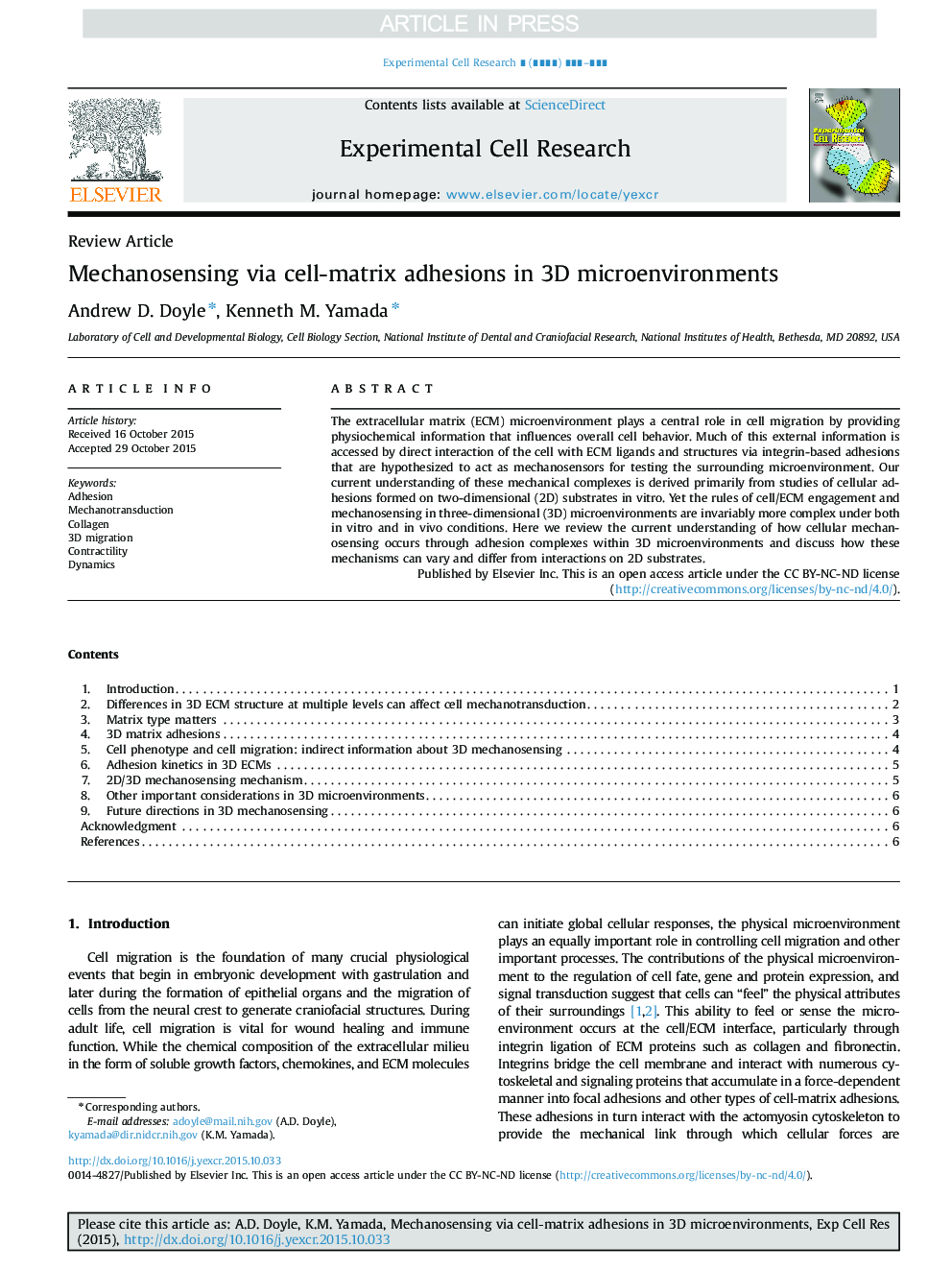| Article ID | Journal | Published Year | Pages | File Type |
|---|---|---|---|---|
| 10903742 | Experimental Cell Research | 2016 | 7 Pages |
Abstract
The extracellular matrix (ECM) microenvironment plays a central role in cell migration by providing physiochemical information that influences overall cell behavior. Much of this external information is accessed by direct interaction of the cell with ECM ligands and structures via integrin-based adhesions that are hypothesized to act as mechanosensors for testing the surrounding microenvironment. Our current understanding of these mechanical complexes is derived primarily from studies of cellular adhesions formed on two-dimensional (2D) substrates in vitro. Yet the rules of cell/ECM engagement and mechanosensing in three-dimensional (3D) microenvironments are invariably more complex under both in vitro and in vivo conditions. Here we review the current understanding of how cellular mechanosensing occurs through adhesion complexes within 3D microenvironments and discuss how these mechanisms can vary and differ from interactions on 2D substrates.
Related Topics
Life Sciences
Biochemistry, Genetics and Molecular Biology
Cancer Research
Authors
Andrew D. Doyle, Kenneth M. Yamada,
